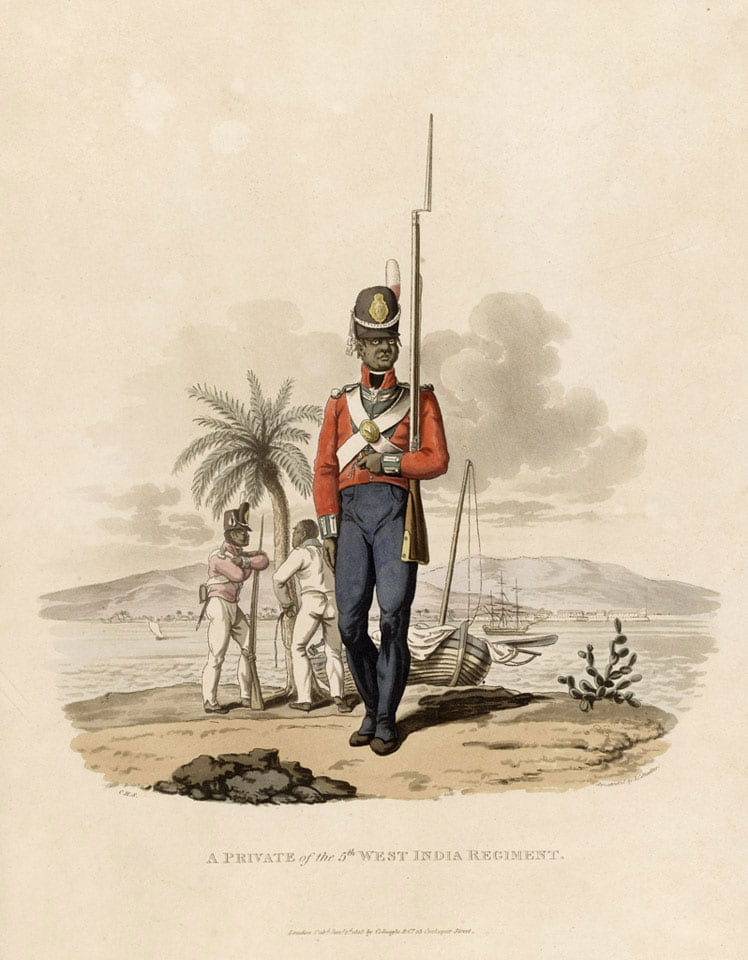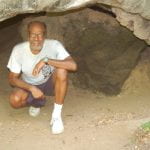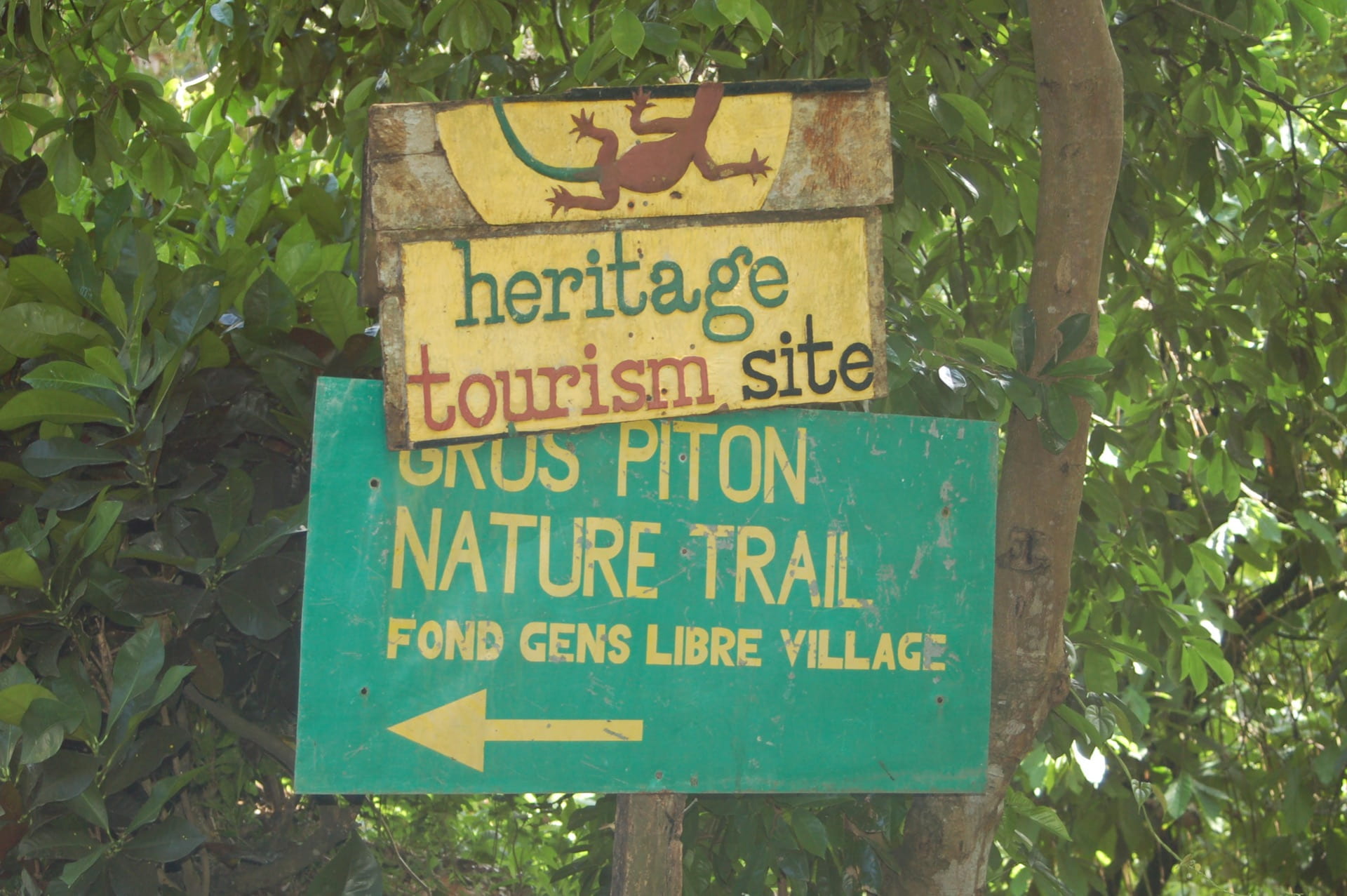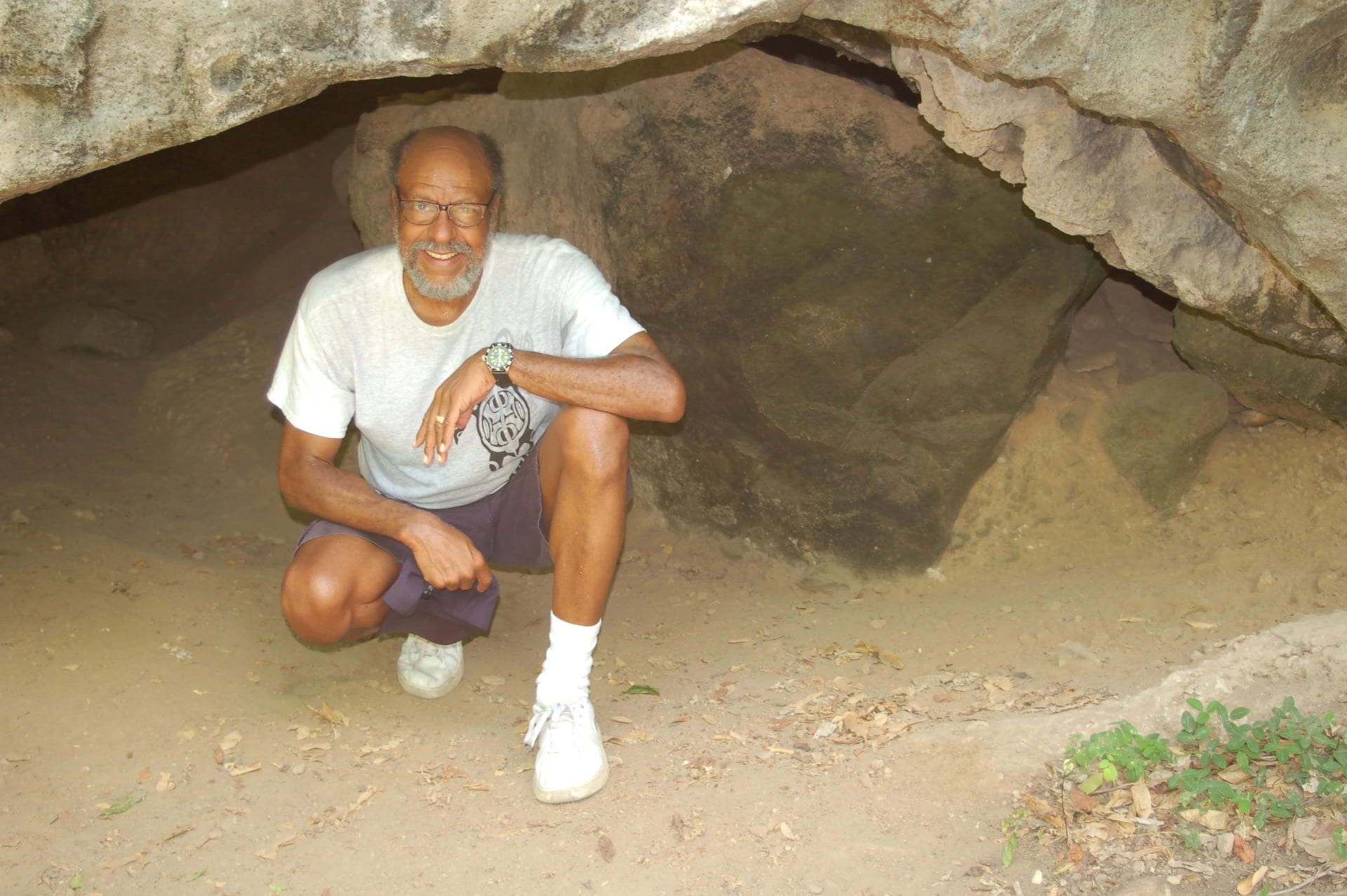Archives For November 30, 1999
This summer I was fortunate to pursue my African American and diasporic research on St. Lucia, one of the Windward Islands in the eastern Caribbean. It is a lush and densely vegetated island with a rugged and mountainous topography. That makes it absolutely breathtaking to view and somewhat challenging to drive through on the winding, often narrow and alternately rising and plummeting roads. This place has a complicated history as revealed by the mixture of place names one finds. Travelers fly into Hewanorra International Airport which takes its name from the indigenous Carib inhabitants. The airport is in Vieux Fort–a town named by the French, the first European settlers–while a scenic area in the north, Rodney Bay, is named for a British naval officer. The mixture of English and French names speaks to the complicated modern history of the island colony. Until the early nineteenth century, through conquest or diplomacy, control of the island passed between Britain and France fourteen times. The British gained final control in 1814 in the aftermath of the Napoleonic Wars. Although it never became an economic powerhouse like its neighbors Barbados or Martinique, the French and British developed a slave-based plantation economy here geared to sugar production for world markets.
Although many slavery-related themes are ripe for investigation in this place, on this visit my interest was very specific. I have been particularly attracted to the international ramifications of the American and French Revolutions for the institution of slavery. This is in keeping with the work we are striving to accomplish here at the Center for the Study of Slavery in Charleston (CSSC). We don’t simply research slavery in this city. We want to broaden the lens through which people view slavery, its ramifications and its legacy. Our Charleston vantage point affords the opportunity to look out onto the Atlantic and the Caribbean and see slavery’s many important hemispheric linkages to our city and to the state. That’s how I got to St. Lucia.
When the gates of the Bastille in Paris were flung open in July 1789, French revolutionaries issued the Declaration of the Rights of Man and of the Citizen and subsequently rallied around the motto “Liberté, égalité, fraternité.” This call reverberated throughout the major western colonial empires. In St. Lucia as early as 1790, free persons of color began meeting and demanding equality. Two years later, the colonial assembly extended the right to vote and hold office to free men of color. However, the enslaved population was unaffected and grew increasingly restive. Some relatively small, scattered and unsuccessful rebellions occurred on plantations by 1792. That summer the royalist governor resigned and departed the island and representatives of the new French government took control. Recognizing a new era had arrived, many slaves began abandoning the plantations by early 1793. Life on the island became increasingly unpredictable, and the British began an invasion of France and similarly threatened other parts of its empire. On February 4, 1794 the French Republic, after vacillating for years and in an effort to strengthen its military preparations, abolished slavery throughout the empire and bestowed citizenship on the freedmen. These steps were taken too late for the French to save St. Lucia, which was successfully occupied by British forces in the fall. However, the British soon discovered, just as they had previously learned during the American Revolution, that they could occupy forts and cities relatively easily, but their greatest challenges arose from rebels in the countryside.
Supporters of the French revolutionary government gathered in the countryside and organized L’ Armee Francaise dans les Bois (the French Army in the Woods). Comprised mainly of fugitive slaves, the group also attracted free men of color, poor whites and some French soldiers. For the fugitive slaves, the French Revolutionary government represented emancipation; others became supporters for a variety of reasons. The British and their royalist supporters disparagingly referred to this unofficial band of insurgents as the Brigands. They were nevertheless a powerful and resourceful adversary because they were familiar with the topography and used guerilla warfare tactics that were well adapted for the mountainous, densely vegetated environment.
After one skirmish with the Brigands in 1794 in northern St. Lucia, a British officer recalled: “the Rascals are in such Numbers and the Woods impenetrable that I am much afraid they will not be easily quelled particularly as I cannot well spare more men from this Garrison.” In addition, tropical diseases sidelined many soldiers, further eroding British military strength.
St. Lucia’s royalist planters opposed arming their slaves, fearing this would only invite insurrection. In order to improve their effectiveness, British Lieutenant General Sir John Vaughan reinforced his soldiers by bringing the Black Carolina Corps to St. Lucia from their base on Martinique. This group consisted of fugitive slaves and free persons of color that labored and fought for the British in South Carolina during the American Revolution. Toward the end of the war, in late 1782, at least 264 of these men evacuated Charleston with their British counterparts bound for St. Lucia. Once there they were formally organized, serving until the war ended and they were transferred to Grenada. The Carolina Corps was the first black unit to be permanently incorporated into the British West Indies peacetime military forces. They were now pressed into service on St. Lucia. They were soon joined by Malcolm’s Rangers or the Black Rangers, a group comprised of royalist slaves from French Martinique. The French forces, not sitting idly, were taking some important initiatives. During the era’s incessant fighting, the neighboring French island of Guadeloupe temporarily fell to the British, but by the end of 1794 it was recaptured by revolutionary France. It became a vital source of supplies and tactical support for the Brigand resistance against the British on St. Lucia.
In the fighting that ensued in 1795, the British forces continued facing protracted insurgent resistance. On multiple occasions in the southern part of the island, the insurgents successfully ambushed the invaders from the hillside and along narrow pathways. One such attack in April emanated from a Brigand settlement located on the side of Gros Piton, one of the tallest volcanic peaks on the island. The camp was led by a highly regarded and talented colored woman, Flore Bois Galliard, whose memory is enshrined in the piton named for her: Piton Flore. In another nearby campaign, the eight-hour Battle of Rabot, British forces faced withering Brigand fire and lost over one hundred men, forcing them to retreat from the southern island and take refuge in the north. Even here they only found temporary respite as Brigand attacks dislodged them from Pigeon Island and forced them from St. Lucia by mid-June.
The British occupation had lasted about a year (spanning 1794-95) and had come at considerable cost to themselves and to the island’s enslaved and free black populations. The next year, 1796, British returned in force and mounted a sustained campaign, often using scorched-earth tactics to root out the dogged Brigand resistance; by early 1799 the insurgency had been substantially crushed. One factor contributing to British success at this time was greater reliance on black troops. In mid-1795 when British fortunes deteriorated on St. Lucia, steps were taken to organize more black soldiers. The Black Carolina Corps was combined with similar groups from the Caribbean–Malcolm’s Rangers and the Dominica Rangers–to form the First West India Regiment. Subsequently the Second, Sixth and the Eighth West India Regiments were organized with black troops drawn from several Caribbean islands. Sometimes their ranks were bolstered by Africans imported through the Atlantic slave trade. The West India Regiments were effectively deployed in occupying and pacifying St. Lucia and would become a regular fixture in Britain’s future military operations.

“A Private of The 5th West India Regiment, 1812,” from the UK’s National Army Museum.
Except for a brief period in 1802, St. Lucia remained under British control. This meant the emancipation decree issued by revolutionary France was reversed and Britain reestablished slavery on the island. However, the protracted fighting ensured that the slave population was diminished when peace resumed. In 1790 the slaves numbered 18,406 but by 1799 their numbers had fallen to 13,391. Many died in the fighting while some were carried off to other islands. Many also remained as fugitives in the countryside.
Part of my trip focused on the southwestern part of the island in the vicinity of the major town of Soufriere and the nearby volcanic mountains Petit Piton and Gros Piton, which comprise an important UNESCO World Heritage Site. The image of this area is the iconic representation of the island. It is possible to climb Gros Piton and I was drawn by its stark allure and especially by the opportunity to tread on a landmark that had been a refuge for fugitive slaves and a staging ground for part of the Brigand insurgency.
The small town at the base of Gros Piton is Fond Gens Libre which means “Valley of the Free People.” Inhabited as early as 1749 by slave insurrectionists that sought protection there, the place seems to have attracted additional fugitives in the 1790s.
One can easily see how densely vegetated and rugged the terrain is and thus why fugitives sought out this and similar areas.
At one point my guide and I departed from the regular path and entered a more secluded area. Here she showed me an example of a cave where fugitives were likely to have hidden from authorities or from which Brigand soldiers might have prepared an ambush against invaders.
To journey to these places was at once exhilarating and exhausting. One can only imagine what those ancestors of modern day black St. Lucians must have felt in these environs. Travel to this place and immersing oneself in the environment is another way of going to the “primary sources” of history. Once you have done so, you cannot but have a deepened appreciation for the historical experience and the humans who lived it. Some of those who lived it were South Carolinians.
Dr. Bernard Powers, Emeritus Professor of History at C of C, is the director for the Center for the Study of Slavery in Charleston and a board member and Interim Director for the International African American Museum (IAAM).
Bibliography
Edgar, Walter, The South Carolina Encyclopedia University of South Carolina, 2006.
Gaspar, David B., “La Guerre des Bois: Revolution, War and Slavery in Saint Lucia 1793-1838” in David B. Gaspar and David P. Geggus, eds., A Turbulent Time: The French Revolution and the Greater Caribbean Indiana University, 1997.
Harmsen, Jolien et. al, A History of St. Lucia Lighthouse Publications, 2014.
Nicholas, Lorraine and Brijesh Thapa, “Tourism in the Fond Gens Libre Indigenous community in Saint Lucia: Examining impacts and empowerment.” Accessed August 12, 2019.
In February, CSSC Director and Emeritus Professor of History, Dr. Bernard Powers, delivered a lecture entitled “Denmark Vesey, South Carolina and Haiti: Borne, Bound, and Battered by the Common Wind.” This was the keynote address for the first evening of the Carolina Lowcountry and Atlantic World’s academic conference, “The Vesey Conspiracy at 200: Black Antislavery in the Atlantic World.”











